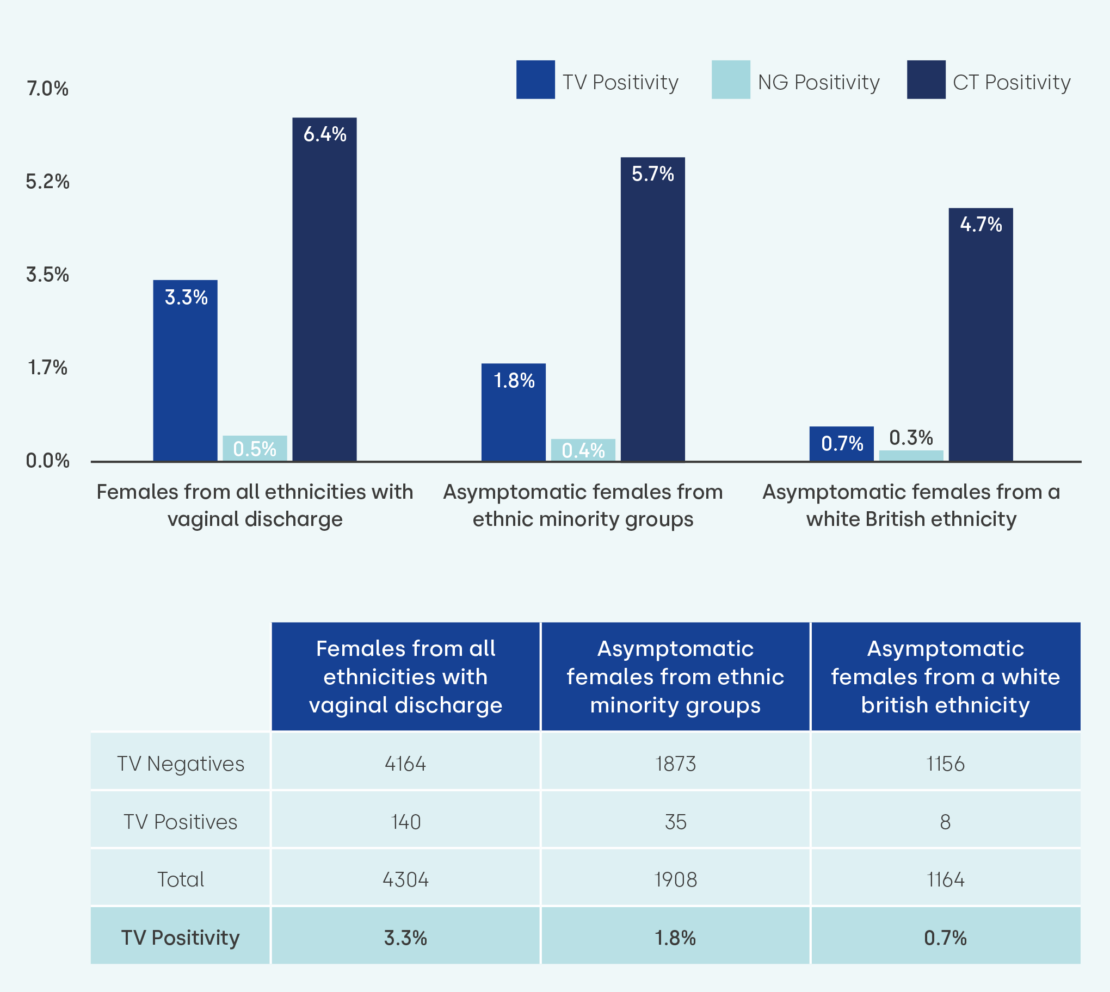by Kate Ebbutt
2.5%
overall TV positivity rate across all cohorts
5.2%
Positivity rate for Black African asymptomatics
3.3%
Positivity in females with vaginal discharge
Clune M (Preventx), Proom T (East Sussex County Council), Harish P (East Sussex Healthcare NHS Trust), Aderogba K (East Sussex Healthcare NHS Trust), Navaratne L (Maidstone & Tunbridge Wells NHS Trust), Scott J (Somerset NHS Foundation Trust), Hill P (Somerset NHS Foundation Trust), Wareham N (Somerset NHS Foundation Trust), Whelen S (Sandwell & West Birmingham NHS Trust), Twydall E (Gloucestershire Health and Care NHS Foundation Trust), Karunaratne I, DeBurgh-Thomas A (Gloucestershire Health and Care NHS Foundation Trust)
Background:
An online symptomatic triage has enabled females who self-identified as having vaginal discharge to be tested for Trichomonas vaginalis (TV). Some areas also did TV testing in asymptomatic females to understand their local prevalence.
Method:
Using the highly sensitive and specific Cobas TV assay (Roche),TV testing was carried out through an online STI testing service in five English Local Authority areas. We analysed 7376 samples for:
- Females from all ethnicities self-IDing with vaginal discharge (n=4304)
- Asymptomatic females who were White British (n=1164) and all other ethnic groups combined (n=1908)
TV positivity rates were also compared by ethnicity, age, deprivation decile, sexuality, and urban and rural classification.
Results:
The overall TV positivity rate across all cohorts was 2.5% (n=183), with 3.3% (n=140) recorded in females with vaginal discharge, 0.7% (n=8) in asymptomatic White British females and 1.8% (n=35) for asymptomatic females from all other ethnic groups combined.
In the asymptomatic cohort, positivity was highest for Black African at 5.2% (n=17), and 5.4% (n= 11) for White and Black Caribbean and Black Caribbean.
A comparison between the TV positivity and Neisseria gonorrhoeae (NG) positivity in these cohorts (tested with NG NAAT on the same 7376 samples), showed higher positivity for TV across all groups: 3.3% vs. 0.5%; 1.8% vs. 0.4%; 0.7% vs. 0.3% for TV and NG, respectively.

Discussion
The TV positivity rate of females with vaginal discharge seen in this study supports the use of an online triage
to identify symptoms and provide the most clinically appropriate tests. More investigation is needed on whether
asymptomatic populations of all ethnicities should be tested for TV and NG, respectively.






Book a demonstration of our tech platform
About the author:
Kate Ebbutt is the Head of Marketing and Communications for Preventx